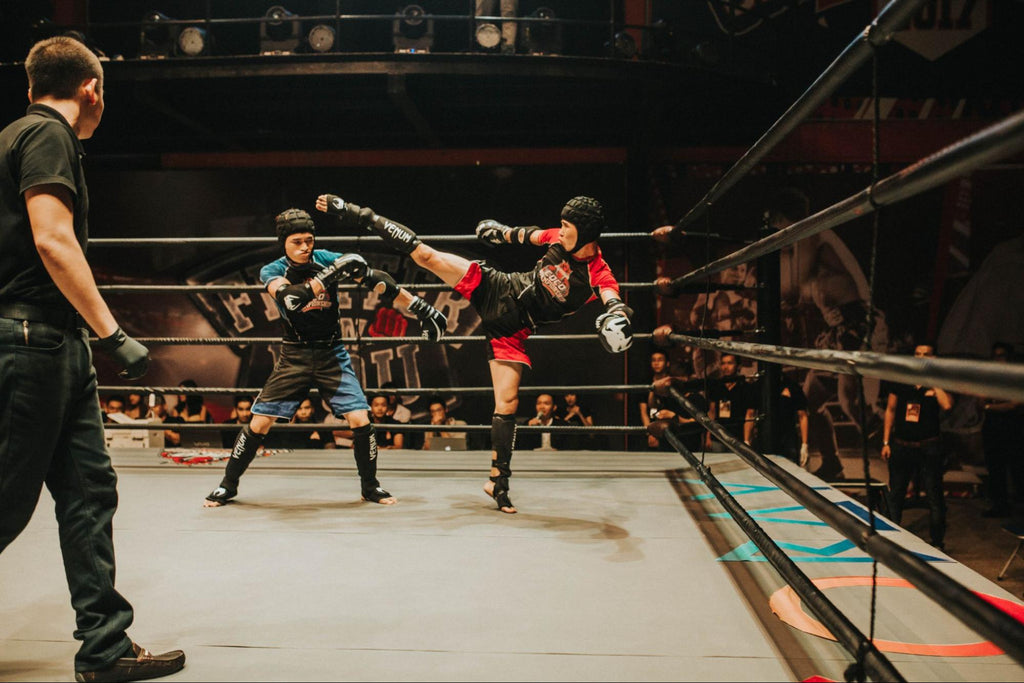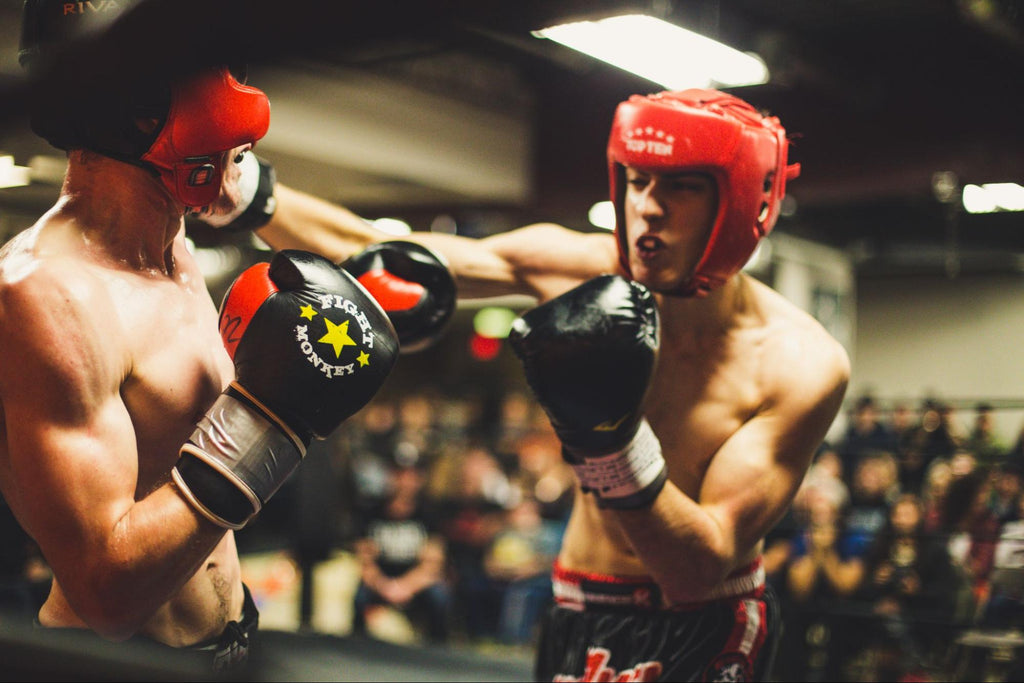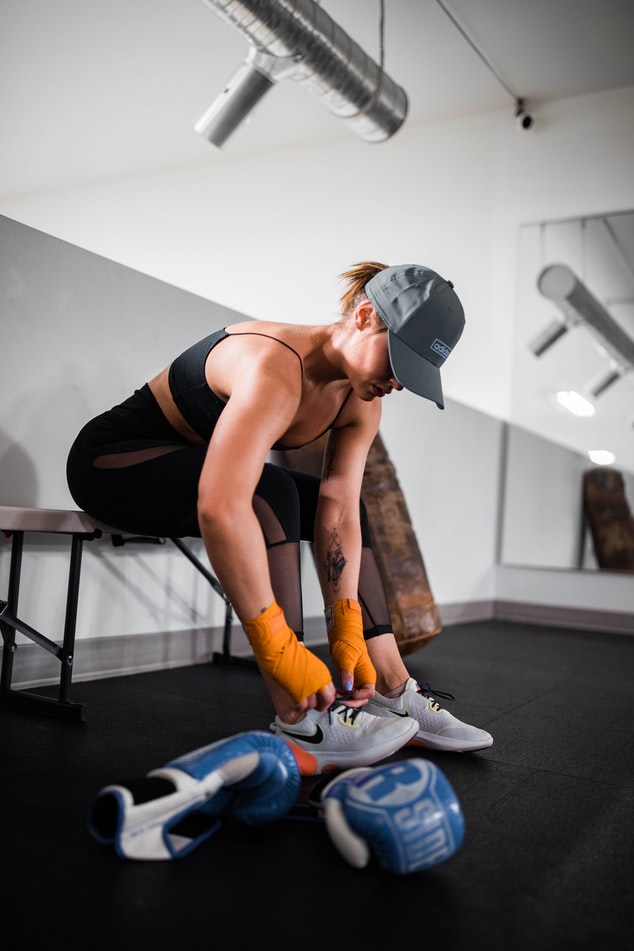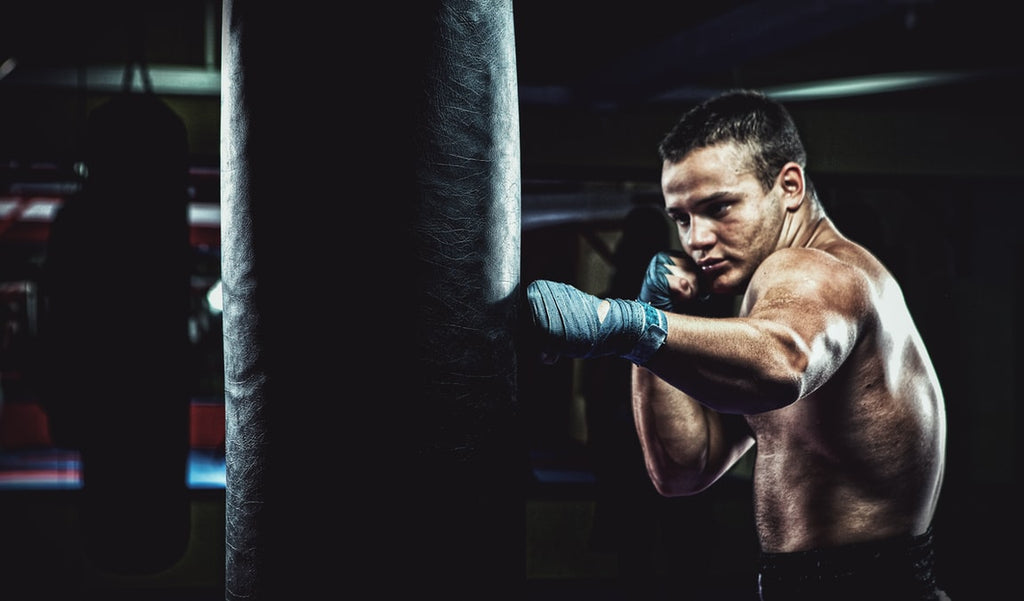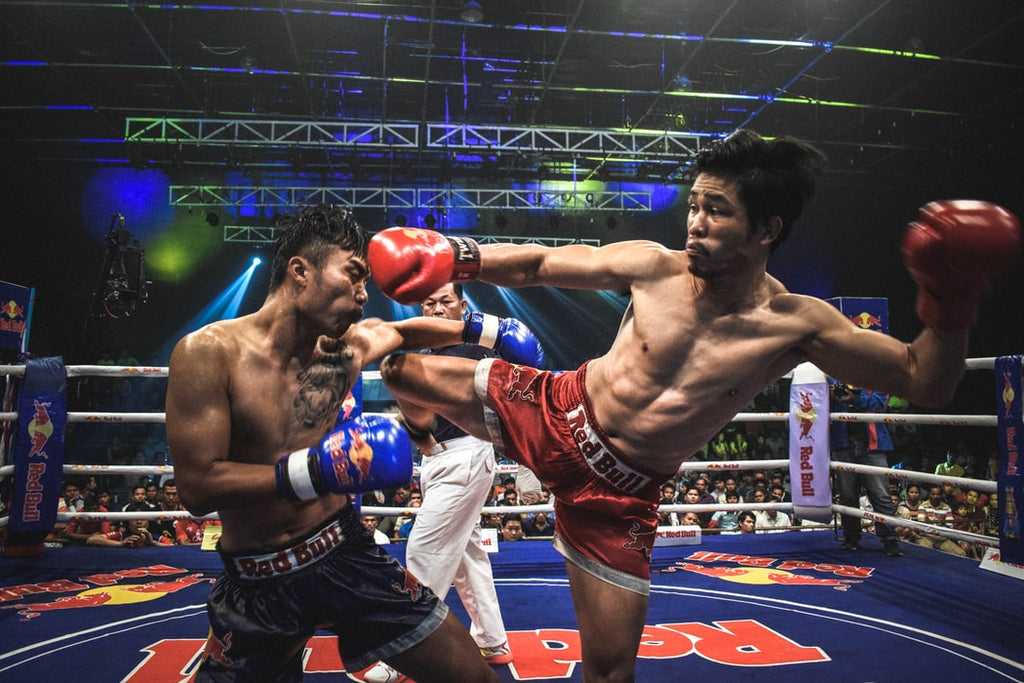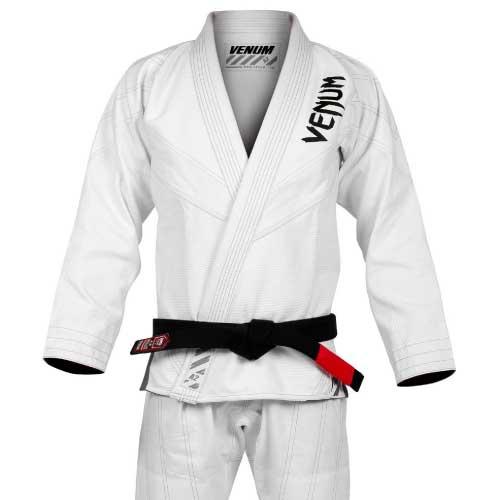
| Aimee Devitt
How to choose the right boxing gloves (and why you must)
Stop.
Before you even think about landing a punch, make sure you protect your hands with well-fitting boxing gloves that may also improve your performance.
Why should you wear quality boxing gloves that are suited to your specific training or competition goals?
Boxing is a physically demanding and high-impact sport, which is why we love it. But there are risks with overusing your fists too: osteoarthritis, carpal bossing and fractures – to name a few. Injuries happen all of the time. New boxers, in particular, are more likely to hurt their hands with poor technique.
This risk is even higher when you don’t wrap your wrists and wear suitable boxing gloves.
To add insult to injury, the wrong boxing gloves may even hinder your performance (depending on what your goals for each boxing session are).
Talk about a double whammy…
How do the right boxing gloves protect your hands and reduce the risk of injury?
Boxing gloves are designed to reduce or absorb force as the glove compresses, so you can strike the bag (or your opponent) as hard as possible – without worrying so much about breaking or cutting your hands.
The right boxing gloves also protect your opponent, by distributing the force over a larger surface area to soften the impact (compared to punching with a bare fist).
How do the right boxing gloves help to improve your performance?
There are many types of boxing gloves on the market: bag gloves, MMA gloves, training gloves, sparring gloves – the list goes on!
There’s a reason why there’s such an array of options: they each suit a different purpose and boxing style. For example, smaller boxing gloves that are more compact are designed to deliver the most powerful blow to your opponent – making them suitable for competing professionally in the boxing ring.
However, when you’re sparring for training purposes – your intention is to practise in the safest and most comfortable manner (without sacrificing performance). Larger training boxing gloves with more padding work best to protect you and your opponent.
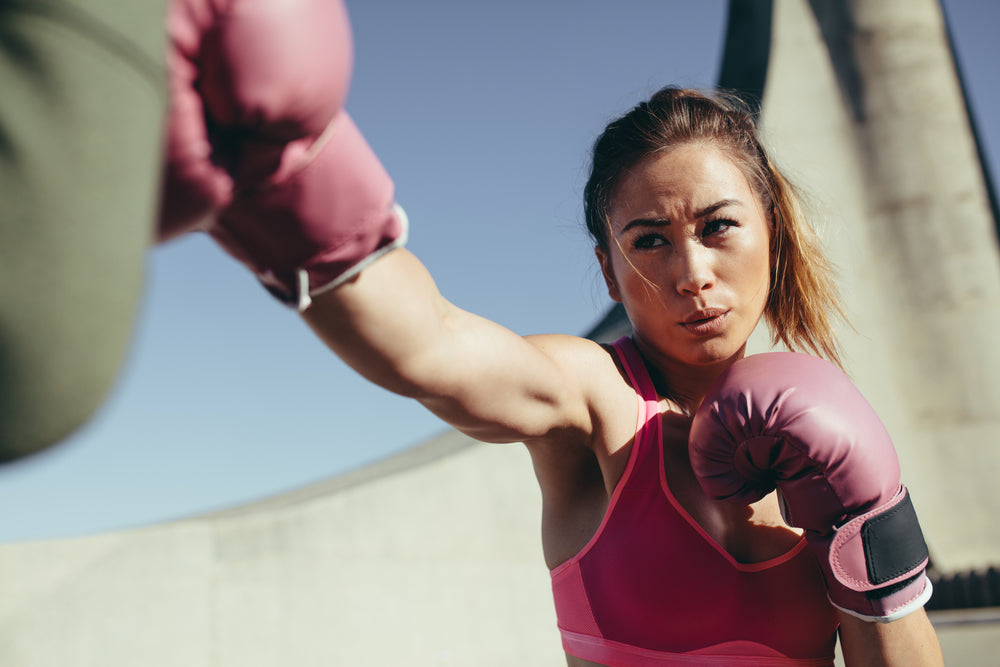
Choosing the right pair of boxing gloves – here’s what you need to consider:
- Are you a beginner?
- What is your purpose: training on a bag, sparring, or competing?
- What boxing glove size to choose?
- How much should the boxing gloves weigh in ounces?
- What material are they made out of?
- Do you need to spend a lot of money on boxing gloves?
Are you a beginner?
There are two main approaches for amateur boxers, depending on your personal preferences.
Minimalist gloves: A boxing glove with minimum padding doesn’t provide much protection or comfort. On the plus side – this is a faster way to shine a light on improper technique, because you get a better sense of exactly how a punch is meant to feel.
Heavier training gloves: New boxers are bound to make many mistakes. Padded gloves provide comfort and minimise the risk of injury during this window of intense learning. A 12oz (ounce) training glove is a good starting point, as it also serves as a conditioning tool to boost endurance and stamina.
For the highest level of protection, it’s best to use bigger boxing gloves when starting out, and gradually reduce the boxing glove size as you progress to competition level.
What is your purpose: training on a bag, sparring, or competing?
As previously mentioned, there are many different types of boxing gloves – and for good reason. You may even use all of these boxing gloves, at different stages of your boxing journey.
Here are some of the most common boxing glove options:
Bag gloves: These are suitable for using a punching bag or boxing pads. Bag gloves contain less padding than sparring gloves, so you can really feel if you’re using the wrong technique. Bag gloves also tend to be lighter and smaller than boxing gloves.
You can get away with less padding because you’re hitting an inanimate object, so there’s no risk of knocking someone out! However, choose bag gloves with enough padding to protect your fingers - and make sure they fit snugly and comfortably while wearing a wrap inside.
If you’re doing a lot of heavy hitting, you can purchase bag gloves that come with extra padding for hand protection (four layers of padding offers a decent amount of shock absorption, for example).
Training gloves (or boxing gloves): A versatile option for beginners, as the padding is heavy enough for safe sparring, but also lightweight enough to practice with a punching bag. In other words, the best of both worlds! Training gloves contain more padding than bag gloves, but aren’t as heavy as sparring gloves. Training gloves are basically the Goldilocks of the glove world. Look for a boxing glove that’s attached to a full wrist wrap, to give extra protection to your wrist, forearm, fingers and hand.
Sparring gloves: These are also used for training, however they come with thicker padding than traditional boxing gloves. The padding is slightly more cushioned, to reduce the risk of injury when sparring with a partner. Your goal is to develop the best skills and techniques when sparring, so this stops you from hitting your opponent with full force. Sparring gloves usually range from 14 to 20oz in size but the most commonly used size is 16oz.
MMA gloves: The open finger design distinguishes MMA gloves from boxing gloves. There’s also less padding. You can easily form an open palm, which helps fighters to achieve a firm and natural grip. This is good for grappling your opponent, or training in a gym environment (when you want to quickly alternate between boxing and other exercises, like push ups or weight lifting).
Competition boxing gloves: These offer less protection and padding than sparring or training gloves. They’re lighter, smaller and more compact – usually weighing around 10oz. Their purpose is to help professionals move quickly and deliver powerful punches to opponents in the ring.

How to choose the right boxing glove size?
It’s always best to choose a good quality pair of boxing gloves that fit your hands snugly (but not too tight!).
This is important for hand protection, because there’s lower risk of injury with less room for your hands to move around.
You should always try on boxing gloves before buying them, to make sure you’re comfortable with the fit. Make sure you leave enough room to wear a hand wrap beneath the boxing gloves (for hand added protection).
It’s not necessary to measure your hands, but if you want to do this, follow these steps:
- Use a tape measure to measure your dominant hand around the knuckles (in inches or centimetres – depending on the seller’s chart).
- This is your boxing glove measurement. Refer to the seller’s chart to find the corresponding size. For example, 9 inches is typically a medium boxing glove.
- Ask the seller for more information if you need more guidance.
How to choose boxing glove weight?
Your movement and agility is influenced by the weight of boxing gloves, which can vary between 8oz (ounces) to 20oz.
The general rule is to choose a training glove that’s proportionate to your body weight. Smaller weighted boxing gloves are suitable for individuals who are lighter, while heavier boxing gloves work well if you weigh more (but they also create a heavier workout).
To give you a rough idea: if you weigh less than 54 kilos, an 8 to 12oz boxing glove may be suitable for training (this applies to children as well). A 12 to 18oz boxing glove will generally serve people who are heavier than 54 kilos.
Also consider your intentions for boxing, as this helps to determine the weight you should be using. For example, 10oz boxing gloves are typically used by professional boxers during competitions, whereas 16oz boxing gloves are common for sparring training.
If we use sparring as an example, a general guide may look like this:
45 kg to 57 kg: 12 to 14oz boxing gloves
57 kg to 72: 14 to 16oz boxing gloves
Heavier than 72 kg: 16 to 18oz boxing gloves
Please speak with your seller, if you require further guidance.
What material should the boxing gloves be made out of?
To protect your hands and support performance; boxing gloves should be compressive, durable and resistant to forceful impacts. You need a quality material like leather for this purpose. Leather is one of the strongest, most comfortable and flexible materials available. It also provides excellent odour and moisture control – which means that leather gloves dry quickly and aren’t likely to stink!
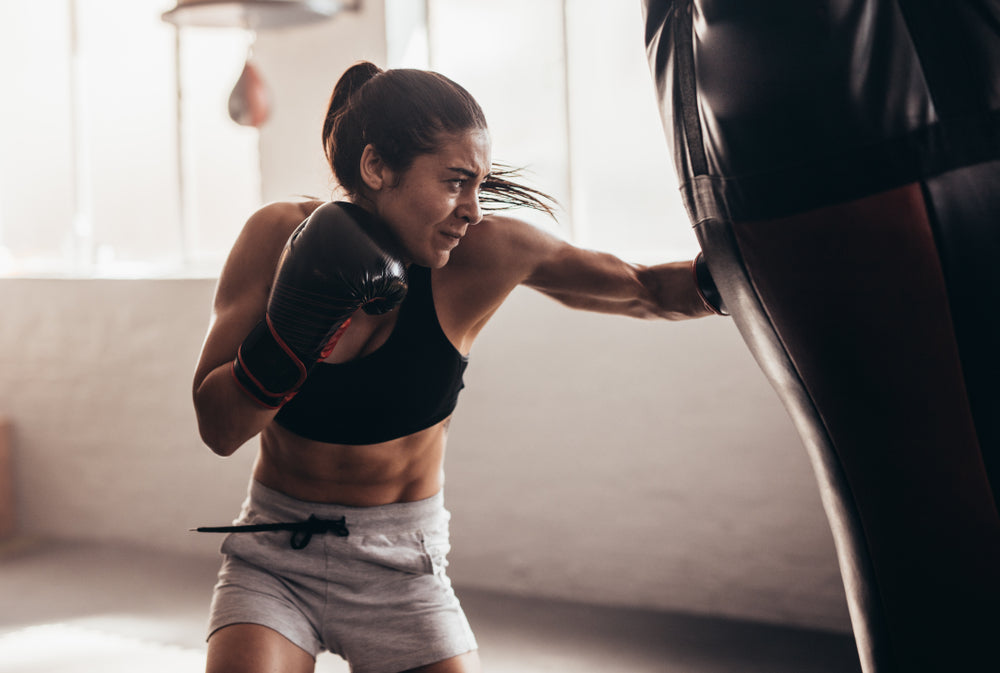
Do you need to spend a lot of money on boxing gloves?
It’s not necessary to spend big on boxing gloves, especially if you’re just starting out.
In fact, we would advise against forking out hundreds of dollars on your first pair of boxing gloves. You won’t yet know what type of boxing glove is best for you, and you may not remain committed to the sport – so that’s money down the drain.
On the other hand, steer clear from super-cheap boxing gloves, if you can. Vinyl is one material that you may want to avoid for long-term use, as it will wear out quickly, and won’t give you adequate support.
Tip: if you’re on a budget, keep an eye out for sales – as you can usually pick up a good bargain.
For more information, please contact our helpful team at The Fight Factory on (03) 9464 4666. We’re happy to point you in the right direction!
 »
»

